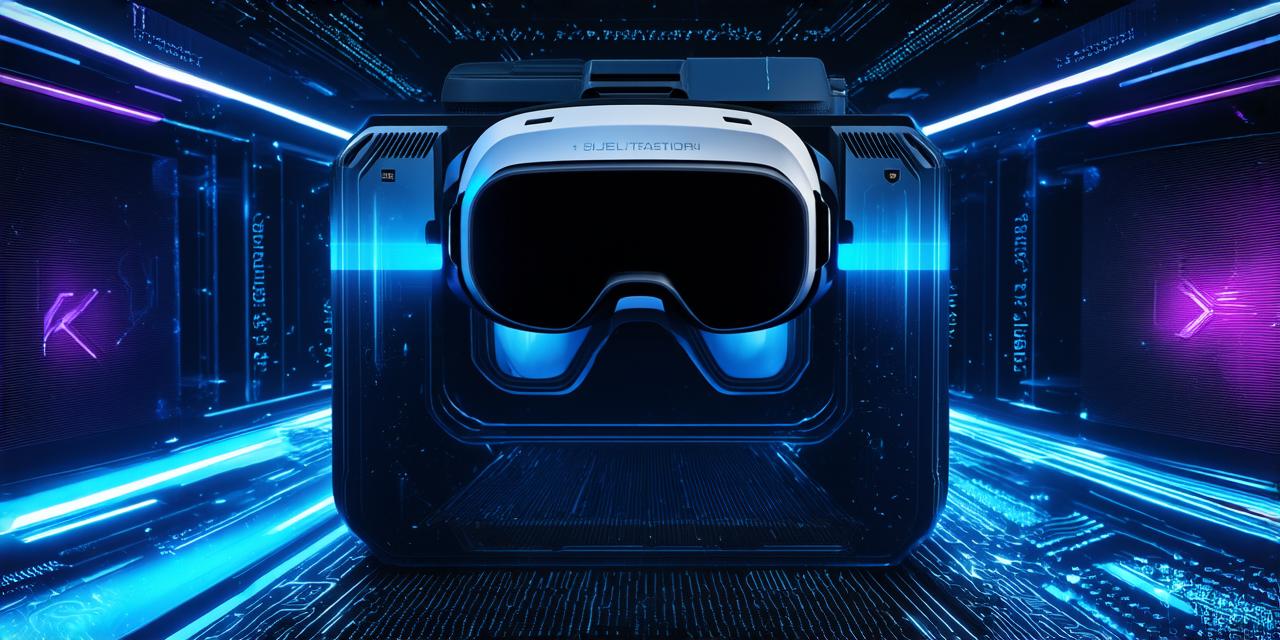<!DOCTYPE html>
What is Virtual Reality?
Virtual reality (VR) is a technology that simulates a 3D environment in real-time. Users wear specialized headsets or goggles that track their movements and adjust the virtual world accordingly, allowing them to feel as if they are physically present within the simulated environment.
VR has been used in gaming, education, training, and medical applications, among others.
Advantages of Virtual Reality
- Immersive Experience: VR provides a fully immersive experience that engages users on an emotional level. By simulating a realistic 3D environment, users can feel as if they are physically present within the virtual world.
- Real-Time Interaction: VR allows for real-time interaction with virtual objects, making it ideal for applications such as gaming and training.
- Cost-Effective: VR technology is becoming more affordable, making it accessible to a wider range of organizations and individuals.
- Customizable: VR experiences can be customized to meet the specific needs of an organization or industry, allowing for tailored solutions that address specific challenges.
Disadvantages of Virtual Reality
1. Limited Accessibility: Not everyone has access to VR technology, limiting its potential reach.
2. Motion Sickness: Some users may experience motion sickness when using VR, which can negatively impact their experience.
3. High Costs: VR technology can be expensive, making it difficult for some organizations and individuals to afford.
4. Limited Applications: While VR has a wide range of potential applications, it may not be suitable for all industries or use cases.
What is Augmented Reality?
Augmented reality (AR) is a technology that overlays digital content onto the real world. AR experiences are typically accessed through a smartphone or tablet, which uses the device’s camera to capture the real world environment and then adds digital content on top of it.
AR has been used in gaming, education, marketing, and other industries.
Advantages of Augmented Reality
- Interactive Experience: AR provides an interactive experience that allows users to engage with digital content in a natural way.
- Cost-Effective: AR technology is becoming more affordable, making it accessible to a wider range of organizations and individuals.
- Customizable: AR experiences can be customized to meet the specific needs of an organization or industry, allowing for tailored solutions that address specific challenges.
- Easy Integration: AR can be easily integrated into existing applications, making it easy for organizations to adopt this technology.
Disadvantages of Augmented Reality
1. Limited Immersive Experience: AR does not provide a fully immersive experience like VR, but rather overlays digital content onto the real world.
2. Dependence on Device: AR experiences require a smartphone or tablet to access, which may not be available to all users.
3. Limited Interaction: While AR allows for some interaction with digital content, it may not provide the same level of interactivity as VR.
4. Privacy Concerns: AR technology may collect data on users, raising privacy concerns.
Practical Tips for Developers
- Know Your Audience: Understand the needs and preferences of your target audience to create experiences that resonate with them.
- Keep it Simple: Avoid overwhelming users with too much information or complex interactions.
- Use Realistic Visuals: Create visuals that are realistic and engaging to enhance the user experience.
- Test and Iterate: Continuously test and iterate on your experiences to improve their effectiveness over time.
- Consider Accessibility: Ensure that your experiences are accessible to all users, regardless of their technological capabilities.
FAQs
Q: What is the difference between virtual reality and augmented reality?
A: Virtual reality provides a fully immersive experience in a simulated environment, while augmented reality overlays digital content onto the real world.
Q: What are the advantages and disadvantages of VR and AR?
A: Advantages of VR include immersion, real-time interaction, cost-effectiveness, and customization. Disadvantages include limited accessibility, motion sickness, high costs, and limited applications. Advantages of AR include interactivity, cost-effectiveness, flexibility, and easy integration. Disadvantages include limited immersion, dependence on device, limited interaction, and privacy concerns.
Q: Can VR and AR be used in the same application?
A: Yes, VR and AR can be used together in the same application to create a more comprehensive user experience. For example, a VR experience could be enhanced with AR content that provides additional information or context.
Summary
Virtual reality and augmented reality are two powerful technologies that offer unique immersive experiences for users. While VR provides a fully immersive experience in a simulated environment, AR overlays digital content onto the real world. Both technologies have their advantages and disadvantages, making them suitable for different applications. By understanding their features and limitations, developers can create engaging and effective VR and AR experiences that resonate with their target audience. As technology continues to evolve, we can expect to see even more innovative applications of VR and AR in the future.
